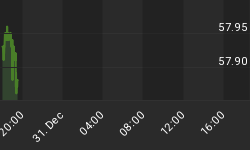The big news this week was the Chapter 11 filing by Delphi. There have been numerous articles discussing it and the implications for the entire industry. During an interview with the Financial Times, Steve Miller, CEO of Delphi, said that this is the start of a "historical collision point for all social and economic forces that are at work." He said that the larger issue will be with Social Security and Medicare and that, "The overwhelming voltage in the political third rail of touching these entitlements will forestall corrective action for years, but the problem will only grow. I fear something like inter-generational warfare, as young people increasing resent having their wages reduced and taxed away to support social programs for their grandparents' income and health concerns."
Companies have just started reported third quarter earnings. Only 45 S&P 500 companies have reported third quarter earning, so it is much too early to draw any conclusions.
Earnings from Harley-Davidson prove that consumers have not closed their wallets yet, or at least quit signing loan agreements. Sales rose 12% and Harley maintained its production forecasts of 329,000 units for 2005. The company said shipments will increase 6%-7% next year citing macroeconomic factors. This also forced the company lower the low-end of its forecast for long-term growth. The company said it expects to increase production by 5% to 9%, previously it was 7%-9%.
Gannett reported that earnings fell in the third quarter due to lackluster sales and higher newspaper costs. The company said that its costs were 7.7% higher than last year. Dow Jones has also experienced the increase in newsprint prices. In order to combat higher prices the company said that it will narrow The Wall Street Journal by three inches to twelve inches. With less space the company will eliminate some "commoditized news reports" and focus on articles that provide analysis. Over the past three years, newsprint prices have increased by about 30%.
While overall S&P 500 earnings growth estimates have been revised higher for the third quarter since the quarter started, it is almost entirely due to higher earnings in the energy sector. When the quarter started, analysts expected earnings to increase by 15.1%. Today, earnings are expected to increase by 16.4%, however, analysts have lowered earnings estimates for six of the ten sectors. The surge in oil and natural gas prices will boost earnings in the energy sector by 71%, compared to 21% growth forecasted three months ago. The largest downward revisions have been in consumer discretionary (7% to 1%), financial (25% to 16%), and materials (12% to -9%). Fourth quarter earnings have also been boosted by the energy companies. Earnings are expected to increase 16.2% during the fourth quarter, compared to 12.2% three months ago.
Fed officials have expressed more concern over inflation than slowing growth. The minutes of the September meeting said that "further rate increases probable would be required." By using the plural "increases," it is very likely that rates will be higher than 4.0% in the near future. In fact, the futures market indicates a chance of rates moving to 4.5% by the January meeting.
Investors already know that energy and raw material prices have increased, so the focus will be if companies have been able to pass along price increases. It does appear that psychology of corporate managers has changed. It is likely that high energy prices have created an environment where managers are more willing to acceptance of higher prices, which will lead to more prices being passed on. This will eventually drive up consumer prices.
While the consumer has held up remarkably well following the surge in energy prices, there is a considerable amount of concern that it will not last. Most consumers have not changed their purchasing habits significantly. It is likely that consumers first thought it was a one-time spike and didn't anticipate the higher costs to be permanent. With winter just around the corner and forecasts calling for heating bills to be 50% more than last year, the prospect that higher costs will be permanent should set in. With savings already negative, consumer spending will likely come under pressure.
















